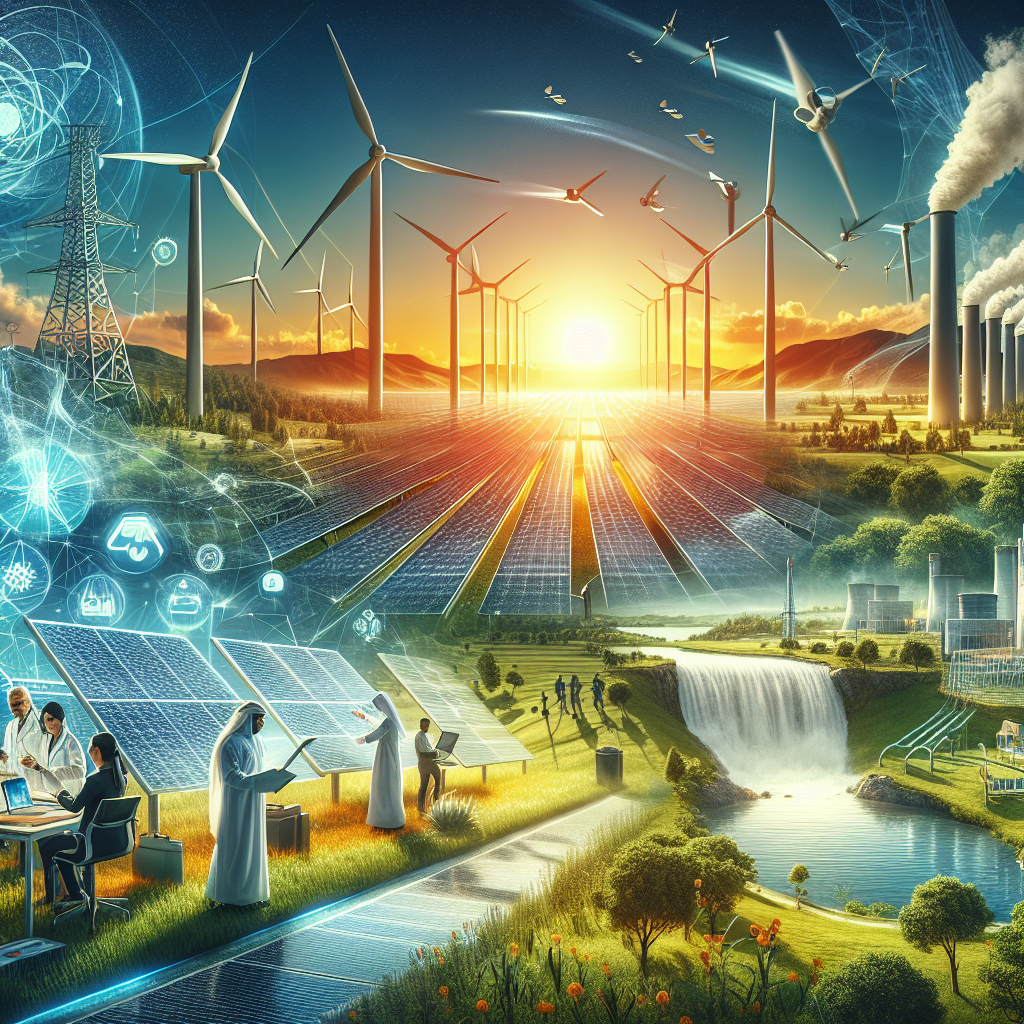The global movement towards sustainability and reducing carbon footprints has significantly bolstered the development of clean energy technologies. As countries strive to meet their environmental goals, investments in renewable energy sources have spiked, leading to groundbreaking advancements in this sector. This article delves into the latest innovations in clean energy technology and how they are paving the way for a sustainable future.
Solar Energy Innovations
Solar energy remains at the forefront of the clean energy revolution. With continuous research and development, solar technologies have become more efficient and accessible. Here are some of the latest advancements:
Perovskite Solar Cells
Perovskite solar cells have emerged as a promising alternative to traditional silicon-based cells. These cells use a family of materials known as perovskites, which have a unique crystalline structure that is highly efficient at converting sunlight into electricity. The main advantages of perovskite solar cells include:
- Higher efficiency rates
- Lower production costs
- Greater flexibility in application
Recent studies have shown that perovskite solar cells can achieve efficiency levels above 25%, making them a viable competitor to traditional solar panels.
Bifacial Solar Panels
Bifacial solar panels are designed to capture sunlight from both sides of the panel, potentially doubling the amount of energy generated. These panels are particularly effective in environments with high reflectivity, such as sandy deserts or snowy regions. The benefits of bifacial solar panels include:
- Increased energy yield
- Improved performance in low-light conditions
- Enhanced durability
With the installation of bifacial solar panels, it is possible to achieve higher energy output without requiring additional space.
Wind Energy Advancements
Wind energy continues to be a crucial component of the renewable energy matrix. Recent advancements have focused on improving the efficiency and cost-effectiveness of wind turbines:
Offshore Wind Farms
Offshore wind farms are becoming increasingly popular due to the higher wind speeds and less obtrusive nature of installations in open waters. These farms have several advantages:
- Consistent and strong wind patterns
- Reduced visual and noise impact on communities
- Increased scalability
Technological innovations in turbine design and installation techniques have made offshore wind energy more viable and attractive.
Vertical Axis Wind Turbines (VAWTs)
While traditional wind turbines have horizontal axes, Vertical Axis Wind Turbines (VAWTs) are designed to spin around a vertical axis. These turbines offer several benefits:
- Ability to capture wind from all directions
- Lower noise levels
- Reduced maintenance costs
VAWTs are particularly suitable for urban environments where space is limited and wind direction is variable.
Innovations in Hydrogen Fuel Technology
Hydrogen fuel is gaining traction as a clean and versatile energy source. Innovations in this field are focused on efficient production and storage methods:
Green Hydrogen Production
Green hydrogen is produced using renewable energy sources to power electrolysis, which splits water into hydrogen and oxygen. This method is environmentally friendly and provides a sustainable way to generate hydrogen fuel. Key benefits of green hydrogen include:
- Zero carbon emissions
- Diverse applications (transportation, industry, energy storage)
- Potential for large-scale production
Continued investments in green hydrogen production are crucial for achieving a zero-carbon future.
Hydrogen Fuel Cells
Hydrogen fuel cells convert hydrogen into electricity, emitting only water and heat as byproducts. This technology is being explored for use in various applications, particularly in the automotive industry. The advantages of hydrogen fuel cells include:
- High efficiency in energy conversion
- Fast refueling times
- Long-range capabilities
Automakers are increasingly investing in hydrogen fuel cell vehicles, which offer a cleaner alternative to traditional gasoline-powered cars.
Energy Storage Solutions
The integration of renewable energy sources into the power grid requires effective energy storage solutions to balance supply and demand. The latest advancements in energy storage technologies are facilitating the stable adoption of clean energy:
Advanced Lithium-Ion Batteries
Lithium-ion batteries are essential for storing energy from renewable sources. Recent improvements in these batteries have focused on enhancing their capacity, lifespan, and safety. Key developments include:
- Higher energy density
- Faster charging times
- Improved thermal stability
Such advancements are crucial for the widespread use of electric vehicles and large-scale energy storage systems.
Solid-State Batteries
Solid-state batteries replace the liquid electrolyte found in traditional batteries with a solid electrolyte. These batteries offer several advantages:
- Higher energy density
- Greater safety (reduced risk of fire)
- Longer lifespan
While still in the development phase, solid-state batteries hold immense potential for revolutionizing energy storage.
Smart Grid Technologies
The implementation of smart grid technologies is vital for efficiently managing the distribution of energy from renewable sources. These technologies include:
Advanced Metering Infrastructure (AMI)
Advanced Metering Infrastructure (AMI) involves the use of smart meters and communication networks to provide real-time data on energy consumption. Benefits of AMI include:
- Enhanced grid reliability
- Improved demand response
- Better energy management
AMI helps utilities and consumers optimize energy usage, reducing waste and lowering costs.
Grid-Scale Energy Storage
Grid-scale energy storage systems store excess energy generated during peak production periods for use during times of high demand. These systems include:
- Pumped hydro storage
- Compressed air energy storage
- Battery storage systems
By providing stability and flexibility, grid-scale energy storage supports the seamless integration of renewable energy into the power grid.
In conclusion, the advances in clean energy technology are paving the way for a more sustainable and environmentally friendly future. From solar and wind innovations to hydrogen fuel and energy storage solutions, these advancements are crucial for reducing our dependence on fossil fuels and mitigating climate change. Continued investment and research in these technologies will be key to achieving global sustainability goals.

